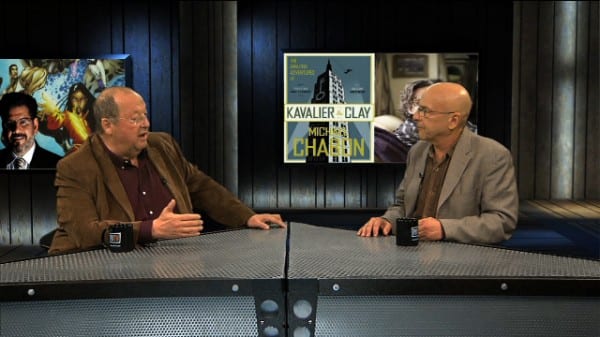MARKDOWNS IN kitchen and dining.
Archive for 2010
October 23, 2010
INSTAVISION: Shutting Down Government’s Open Bar: Gov. Tim Pawlenty Gets Fiscally Specific. He has some positive things to say about the Tea Party, too and — most strikingly — joins with other Republican thought leaders in saying that if the GOP doesn’t get its act together post-November, it may be time to think of a third party in 2012. That’s at about 6:35 in. (Bumped).
PATTY MURRAY RECYCLES: Patty Murray’s Attack Ad Redux: Recycled Video May Raise Campaign Finance Questions.
If you have been getting an annoying sense of déjà vu while watching the air blitz in the U.S. Senate race, it may be because you’ve seen it all before. I’m not referring to Republican challenger Dino Rossi’s previous campaigns for elected office, but instead to a remarkable amount of video and interview footage from Sen. Patty Murray’s attack ads against Rossi that bear a striking resemblance to images from ads against Rossi that aired in 2008. Only the ads that aired in ’08 were in support of Gov. Chris Gregoire and paid for by one-time SEIU and AFL-CIO darling, the Evergreen Progress political action committee.
Well, she gets all her ideas from these people, so why not ads? Sure, it may be illegal, but campaign finance laws — like taxes — are for the little people.
MALARIA KILLING MORE PEOPLE THAN WE THOUGHT?
Malaria has always been one of humanity’s biggest killers, but it may be far bigger than we realised. An unprecedented survey of the disease suggests that it kills between 125,000 and 277,000 people per year in India alone. In contrast, the World Health Organization puts India’s toll at just 16,000.
Other countries using similar accounting methods, such as Indonesia, may also be underestimating deaths from malaria. That means it could be killing many more than the WHO’s official estimate of nearly 1 million people a year worldwide, suggesting more money should be spent to fight it.
It’s too bad the malaria eradication efforts were allowed to fail.
UPDATE: Reader Kevin O’Brien writes:
Glenn
Just FYI I am a contractor for USG working on novel-pathogen preparedness issues. This contract has caused me to dig deep into the books (my background is not in biology, but as a Special Forces operator, and my education is in history and business, undergrad and grad). The problem is: eradicating diseases is a very very brutally difficult thing to do. Most bacteriologists, virologists and parasitologists will tell you that in the end-game that they see, the bugs might well win. And malaria is a bastard of a hard pathogen to eradicate.
First, these things are organisms and Ma Nature disinclines them to shuffle gently off the world stage. They adapt and mutate. What we see as extermination forces, the organism experiences as environmental pressures, to which its response is selective adaptation. In other words, we have to hit it hard as the hammers of hell or there will be survivors who may have a survival trait that breeds generations we can’t kill. (True, this is more a problem with fast-mutating viruses, say, than it is with a more complex parasite like plasmodium. But the same principles are at work in all organisms, just at different velocities).
Second, most of them have multiple hosts. That means that even if we get them out of the human population we need to persistently inoculate and/or treat every new cohort of humans, or the thing comes roaring back from its reservoir in other animals (where it may be benign). We were able to eradicate natural smallpox with a combination of surveillance and inoculation, but it took 20 hard years of international effort, and variola major has no other host than humans. (This is a double-aged sword: it means if we can kill off the virus in humans, we’ve made it extinct in nature; but it also means we haven’t had usable animal models for it until recently, when bioterror concerns motivated some research). Of course, one problem now is that no one has immunity any more, but stocks of the virus still exist, and it’s also possible in theory to synthesize it in the lab, since its genome has been published. Pleasant thought, eh? An engineer rebuilding it might even decide to alter it for greater pathogenicity, or resistance to attack by the antibodies created by current vaccines.
Third, eliminating one organism may create an evolutionary, life-niche vacancy that becomes an opportunity for a new parasite or pathogen. This is true not only of the pathogen itself, but also of its vectors or non-human hosts, if that’s where we choose to attack it.
Yeah, the best way to attack plasmodium is probably to attack the mosquito that’s its vector (from a human standpoint) and its host for a key part of its life cycle. And the best way to attack the skeeter remains that vilified molecule, DDT. But eliminating a human scourge has only been done once — variola — and it’s only been done because of that germ’s peculiar vulnerability as a human-only pathogen.
You know, back from its kickoff in 1959 through the US entry in 1965, the smallpox eradication program almost didn’t start, because a previous malaria-eradication effort failed. There was also cold-war politics: the USSR favored eliminating smallpox, but the USA was focused on malaria. But the malaria eradication effort (even with DDT) choked, and people were not willing to try another eradication program… but somebody talked LBJ into backing it, and when the US swung around to agree with the USSR on eradication targets, the world as a whole was able to beat this monstrous plague. In 20 years of massive effort.
If you want to learn about the smallpox eradication project, you’re in luck. The guy that ran the project was an American from CDC, D.A. Henderson, and he’s written a great, readable book on the subject, Smallpox: Death of a Disease.
Here’s a Smithsonian article about him:
http://www.smithsonianmag.com/people-places/henderson.html
There’s a list of his academic publications on this page. As you see, his interests span a much wider range than just smallpox.
http://faculty.jhsph.edu/default.cfm?faculty_id=306
And he’s also discussed at length in Richard Preston’s The Demon in the Freezer. I make new guys on our project read all of Preston’s bio-hazard stuff. Not like it’s a hard penance, Preston’s a compelling writer.
Finally, if you want to look at malaria in particular, some of the difficulties are brought out in a July 2007 National Geographic article that’s available online.
Now, Henderson himself has come to believe that further eradications are not possible.
While I understand and respect his reasoning, I still support eradication efforts for reasons that I know you understand. We cannot decide to shrink from massive tasks because we might fail. (Cue the Stripes Pearl Harbor speech….) But we need to be aware of how we might fail, and what victory short of pathogen extinction looks like. Because we can’t work to eradicate all pathogens at once: we need to prioritize our work. And certainly, probability of success has to be part of that prioritization. I think malaria is a good next target, but it’s a dreadfully hard one.
Remember when you say, “faster, please,” there’s a lot of really good people out here pedaling as fast as we can. One thing we sure could use is more young Americans taking up hard sciences. I expect a lot of progress from molecular biology as the cost of DNA/RNA sequencing drops, the speed increases, other molecular analysis tools open up, and human knowledge and bioinformatics capability expand. But there’s always room for more smart folks in biology. I’d sure rather see the kids here in this field than mired in the law-school bubble, destined for hating life on doc review in a basement somewhere on a case where only the litigants care about the outcome.
Indeed.
HOPE: Law school hopefuls undaunted by dim prospects.
Advocates for more transparency about law school cost and employment prospects welcomed recent news that the American Bar Association is examining the issue. However, a new survey of prospective law students indicates that better information would do little to stem the tide of law school applications — which hit an all-time high last year.
Veritas, a law school admissions consulting firm, polled 112 prospective law school applicants in June and July, and 81% said they would still apply even if “a significant number of law school graduates were unable to find jobs in their desired fields.” Only 4% said they would not apply to law school under that circumstance.
At the same time, more than half the survey respondents — 63% — were concerned about finding a job after law school, and 70% said they were worried about finding a position in the field of their particular interest.
Hmm. This suggests no bubble-bursting quite yet. But I wonder if that will change when applicants actually know a significant number of people — older siblings and friends — with heavy debts and no jobs? As someone who sells law degrees, I suppose I should hope that this study is right. My advice to potential law students, though, is to avoid the debt part, at least.
DISPELLING THE CONFUSION: The Official Map of Non-Monogamy.
STEPHEN GREEN: Handicapping The House.
A TIMELY PUBLICATION: John Fund’s Stealing Elections: How Voter Fraud Threatens Our Democracy.
ANOTHER STUDY against refined grains.
MODERN ROMANCE.
CHEVY VOLT runs on coal.
IN THE MAIL: From Evan Marshall, City in Shadow.
XENI JARDIN: Crazy jihad troll who threatened Matt & Trey from South Park is so totally busted. “A 20-year old guy named Zachary Adam Chesser pled guilty on Wednesday to three federal charges: communicating threats against South Park’s writers, soliciting violent jihadists to desensitize law enforcement, and attempting to provide material support to Al-Shabaab, an organization designated by the US as a terrorist group. Chesser is so busted. He faces a maximum penalty of 30 years in prison when sentenced on February 25, 2011. He was born Jewish, and converted in his teens to an extremist strain of Islam, adopting the name Abu Talhah al-Amrikee.”
PROFESSOR JACOBSON: Media Matters Is The Symptom, Not The Disease. “Notice something interesting. No conservatives are trying to prevent people from appearing on NPR, but liberal interest groups and their media outlets are trying to prevent people from appearing on Fox News. There is a real threat to freedom in this country, and it does not come from conservatives. Media Matters is just the symptom, not the disease.”
CBO CONFIRMS: ObamaCare Discourages Work.
OAK RIDGE’S “White Castle” is full of uranium. I think I’ll avoid the drive-thru. . . .
CAR LUST: The Underrated Porsche 914.
POLIWOOD: Cultural Suicide Watch.
INVESTIGATING MAXINE WATERS.
HOTLINE: Nancy Pelosi has less money on hand than rival. “Pelosi raised $42,908 between October 1 and October 13 and had $176,738 in the bank. Businessman John Dennis (R) raised $240,764 in those 13 days, according to reports filed with the FEC. Dennis ended the period with $214,877 on hand.” Here’s Dennis’s website.
THE THRIFT-STORE MENACE: With Halloween nigh, resellers brace against bedbugs.
TIM PAWLENTY explains things to President Obama. But I found this commentary interesting: “Obama wants to force Bachmann to campaign at home rather than helping other Republicans and leading Tea Party rallies.” So the Democrats’ master plan is to use President Obama to neutralize . . . Rep. Michelle Bachmann?
JIM TREACHER: Greg Sargent, Thought Cop. “Thank goodness we have Greg Sargent of the Washington Post to remind us what’s permissible to think. Not what’s permissible to act on, or even to say aloud, but to think. How can we all be free if people are allowed to think in unapproved ways? ‘Thoughtcrime does not entail death. Thoughtcrime is death.’”
THREE MAJOR NETWORKS block Google TV.


